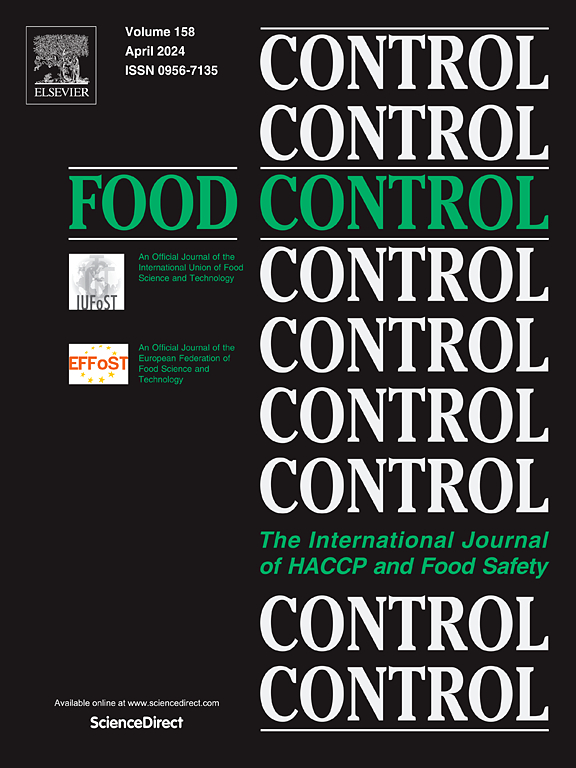UV responded modified polyvinyl alcohol bio-active films with oregano essential oil microcapsules: Microbial control and sensory quality preservation for ready-to-eat chicken breast
IF 5.6
1区 农林科学
Q1 FOOD SCIENCE & TECHNOLOGY
引用次数: 0
Abstract
This study introduced a novel ultraviolet light-responsive active packaging system for ready-to-eat chicken breasts using non-contact packaging. The results demonstrated that the ready-to-eat chicken breast in this packaging system exhibited a significant reduction in microorganisms. The total viable count was 3.80 log CFU/g, which was significantly lower than that of the control (7.88 log CFU/g) after 15 d of storage. The packaging effectively decelerated the changes in pH and color, postponed the processes of lipid oxidation, protein degradation, and moisture loss, and mitigated the variations in textural properties and flavor of ready-to-eat chicken breasts. UV light had a dual effect on the preservation, including cold sterilization, which reduced the initial microorganisms, and light-mediated trigger, which accelerated the release of oregano essential oil. Compared with the control group, the shelf life of ready-to-eat chicken breasts was extended by at least 7 days, demonstrating significant practical application potential.

求助全文
约1分钟内获得全文
求助全文
来源期刊

Food Control
工程技术-食品科技
CiteScore
12.20
自引率
6.70%
发文量
758
审稿时长
33 days
期刊介绍:
Food Control is an international journal that provides essential information for those involved in food safety and process control.
Food Control covers the below areas that relate to food process control or to food safety of human foods:
• Microbial food safety and antimicrobial systems
• Mycotoxins
• Hazard analysis, HACCP and food safety objectives
• Risk assessment, including microbial and chemical hazards
• Quality assurance
• Good manufacturing practices
• Food process systems design and control
• Food Packaging technology and materials in contact with foods
• Rapid methods of analysis and detection, including sensor technology
• Codes of practice, legislation and international harmonization
• Consumer issues
• Education, training and research needs.
The scope of Food Control is comprehensive and includes original research papers, authoritative reviews, short communications, comment articles that report on new developments in food control, and position papers.
 求助内容:
求助内容: 应助结果提醒方式:
应助结果提醒方式:


